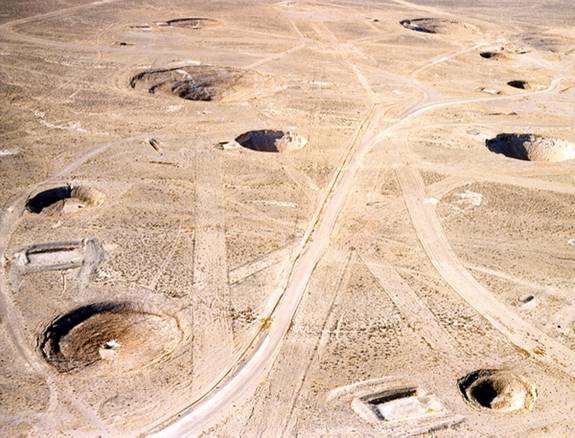ISTC Provided $9 Million to Monitor and Decontaminate Semipalatinsk Nuclear Test Site

In August 1991, the President of Kazakhstan, N. Nazarbaev, took the formidable step to close the Semipalatinsk nuclear test site. Since then initiatives were taken to study and eliminate consequences of nuclear tests for the population, livestock and to decontaminate and rehabilitate the land. The UN drew up resolutions in support of these activities and other international bodies such as the European Parliament debated the situation at various occasions. MEP Struan Stevenson together with US actress Kimberly Joseph started successful fund raising actions. Japan and the USA have provided humanitarian assistance.
The role of international organisations such as the International Science and Technology Centre (ISTC) with an office in Kazakhstan is also to be mentioned.
ISTC has made a contribution to solving complicated environmental and biological problems connected to the test site. The Center has funded more than 25 related projects with a value of 9 Million USD. Other projects are still waiting for funding.
The work is a good example of international collaboration by pooling together the best expertise. More than Fifteen Kazakhstani and Russian research institutes worked together as project leaders with their colleagues from the USA, the European Union, Japan and Canada. They all worked should to shoulder to alleviate the most urgent needs. New equipment was bought and international networks were built.
The main result of this work can be summarized in the following way:
Technologies for environmental monitoring and instrumentation:
- Development of a comprehensive and systematic database of the Test Site;
- Creation of a geochemical-ecological map of Central Kazakhstan;
- Integrated study of radioactive contamination of the atmosphere-underlying surface system and assessment of radiation risks for population;
- Development of high-sensitive ion technology for measurements of low concentrations of hydrogen heavy isotopes;
- Environmental assessment and forecast of the environmental state within the Test Site
Technologies for water pollution and control:
- Development of a groundwater monitoring system;
- Mathematical simulation of contaminant transport in underground water.
Technologies for radiobiology and public health:
- Investigation of sickness levels and mortality rate among children aged from 1 to 5 years;
- Development of a model for effective health control among children;
- Creation of a database of content of plutonium and other alpha-radiators in organism of persons living in the zone of influence of the Test Site;
- Study of cytogenetic, genetic and molecular-genetic effects of chronic ionizing radiation on different model species of plants and animals;
- Analysis of possible adaptive responses of individuals and populations to chronic exposure to ionizing radiation.

